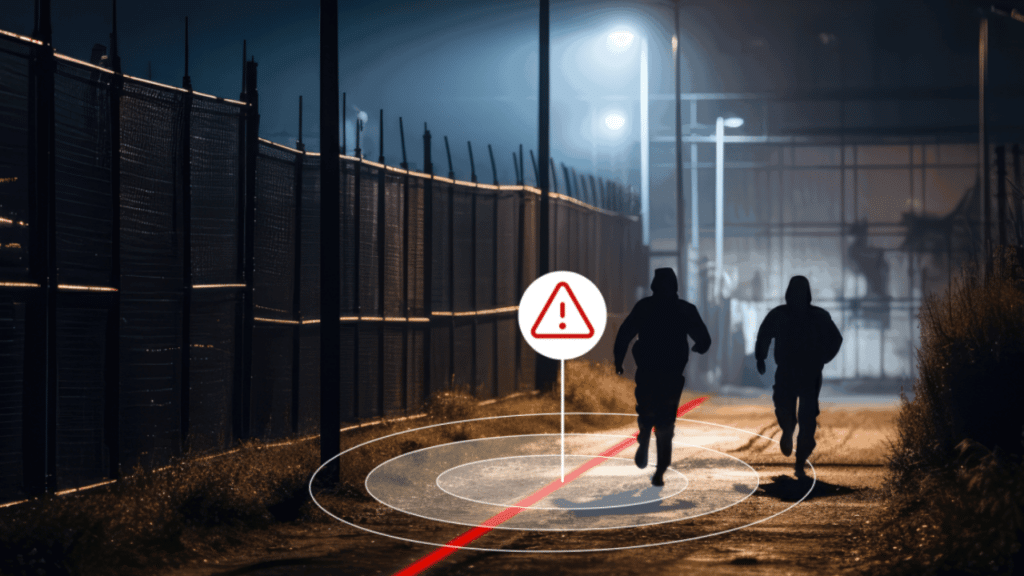Silvia Latorre, Marketing Executive at Optex Europe, explains the paramount importance of physical security in datacentres.
“In today’s digital age, data centres serve as the backbone of the global economy, housing vast amounts of sensitive information and critical IT infrastructure.
“According to a report by ResearchAndMarkets, the European data centre market is expected to grow at a compound annual growth rate (CAGR) of 7.96% from 2024 to 2029.
“Ensuring the security of these facilities is paramount, not only to protect data from cyber threats but also to safeguard against physical intrusions.
Strengthening perimeter security
“Perimeter protection is the first line of defence and a key element of any security system. As with any intrusion attempt, timely detection is crucial, and securing a site’s boundaries gives security teams the opportunity to anticipate potential threats and a better chance of deterring them.
“Advanced fibre optic technologies, such as the Fiber Defender and Echopoint series, can detect vibrations and unusual activities, like vehicle approaches. Specifically, the Echopoint series provides up to 100 km of detection from the alarm processing unit.
“These fibre optic cables can be buried, mounted on fences or a combination of both, and thanks to highly advanced algorithms can filter out false alarms and provide pinpoint detection of an intruder’s location within +/- 6meters.
“It can also indicate whether someone is walking or running, attempting to cut or disable the fence, or if a car, truck, or machine is approaching.
“The level of data provided by these intrusion detectors helps the security team respond more quickly and appropriately; it can be used to activate cameras to follow intruders, lock security gates, trigger security lighting or voice alerts, and dispatch security personnel as needed.
A further security measure to ensure that only authorised vehicles enter or exit the datacentre perimeter are vehicle exit airlocks. Here, above ground vehicle detectors for gate automation ensure efficient operations, by accurately detecting vehicle presence and filtering out human traffic and non-authorised vehicles, reducing the need for manual intervention and increasing the overall security of the data centre premises.
Tracking and deterring intruders
“If intruders manage to breach the perimeter, it’s vital to track their movements and intercept their actions before they escalate. Detecting unauthorised individuals as they approach your building or enter restricted areas can prevent further complications.
“LiDAR systems, such as OPTEX’s REDSCAN Pro, when installed in horizontal mode can cover a wide area surrounding buildings and allow you to customise detection zones specific to your site layout, with each zone triggering different automated responses.
“For instance, you could receive an alert when intruders enter the furthest zone and trigger alarms or dispatch security teams only when they proceed closer to the building.
“REDSCAN Pro covers a wide detection area of up to 100 metres by 50 metres, which can be divided into eight preset zones. Each zone can recognise objects of various sizes and moving at different speeds, including people, vehicles, or local wildlife.
“The next layer of your security infrastructure is the building itself. Most data centre buildings have no external windows and very few access points.
“However, the structure of the building itself must also be safeguarded against threats like drilling through walls, access via ventilation systems, or the roof. LiDAR technology enhances security by creating virtual ‘walls’ to offer highly precise and reliable detection around the building’s structure and virtual ‘ceilings’ on rooftops.
“Additionally, OPTEX lasers are equipped with intelligent logic to filter security events, such as alerting only when an individual approaches a building and a security guard is not present on-site.
“The REDSCAN mini-Pro, model RLS020V, features a built-in IR camera for instant alarm verification even in complete darkness, ensuring comprehensive security monitoring.
“Within the building, people counter sensors, such as Akribos can provide precise and real-time monitoring of personnel movement. This enhances security by ensuring that only authorised individuals are present in restricted areas, and helps manage occupancy levels to comply with safety regulations.
“Additionally, the data gathered can be used for optimising resource allocation and improving operational efficiency within the facility.
Safeguarding server rooms
“Server rooms are the nerve centre of any data centre, varying in number based on the facility’s size. These restricted access zones are typically reserved for technicians and engineers tasked with maintenance, repairs, or equipment upgrades.
“Ensuring that only authorised personnel have access to these areas is crucial to prevent severe consequences and simple access control by badge or biometrics is not always enough to ensure that only authorised personnel enter these areas. An anti-tailgating solution, such as the Accurance OV-102, reinforces security at these strategic points.
“2D LiDAR sensors are ideal for safeguarding server rooms. These sensors provide versatile detection capabilities and function effectively not affected by changes of temperature or lighting, making them ideal for server environments, where they can be installed underfloor, in false ceilings or – most commonly – protecting server racks.
“The 2D LiDAR sensors can create virtual ceilings, walls, and floors, allowing customisable detection areas to effectively cocoon server units and ensure no gaps.
“They can create different detection zones to protect various server racks and integrate with access control systems. When integrated with certain VMS software REDSCAN sensors can pinpoint the exact X, Y coordinates of an intrusion and activate cameras to monitor the precise point, enabling faster responses.
“For example, if an authorised person has access to rack one but tampers with rack two, the system triggers, locking down the room and alerting the security team.
“The target object’s size can also be customised to alert if something as small as a hand reaches for a server to plug in a network cable or USB stick.
Conclusion
“In an era where data security is paramount, physical security measures are equally critical in protecting data centres from unauthorised access and potential threats. OPTEX’s intrusion detection solutions, including its advanced LiDAR and fibre optic technology, provides a robust and versatile answer for comprehensive data centre protection.
“From securing the perimeter and building structure to safeguarding the server rooms, OPTEX sensors offer precise and reliable detection that ensures the safety and integrity of critical infrastructure.
“By incorporating these cutting-edge technologies, data centres can achieve a higher level of security, ensuring that sensitive information remains protected against any physical intrusion.”
To read more Optex news, click here.





